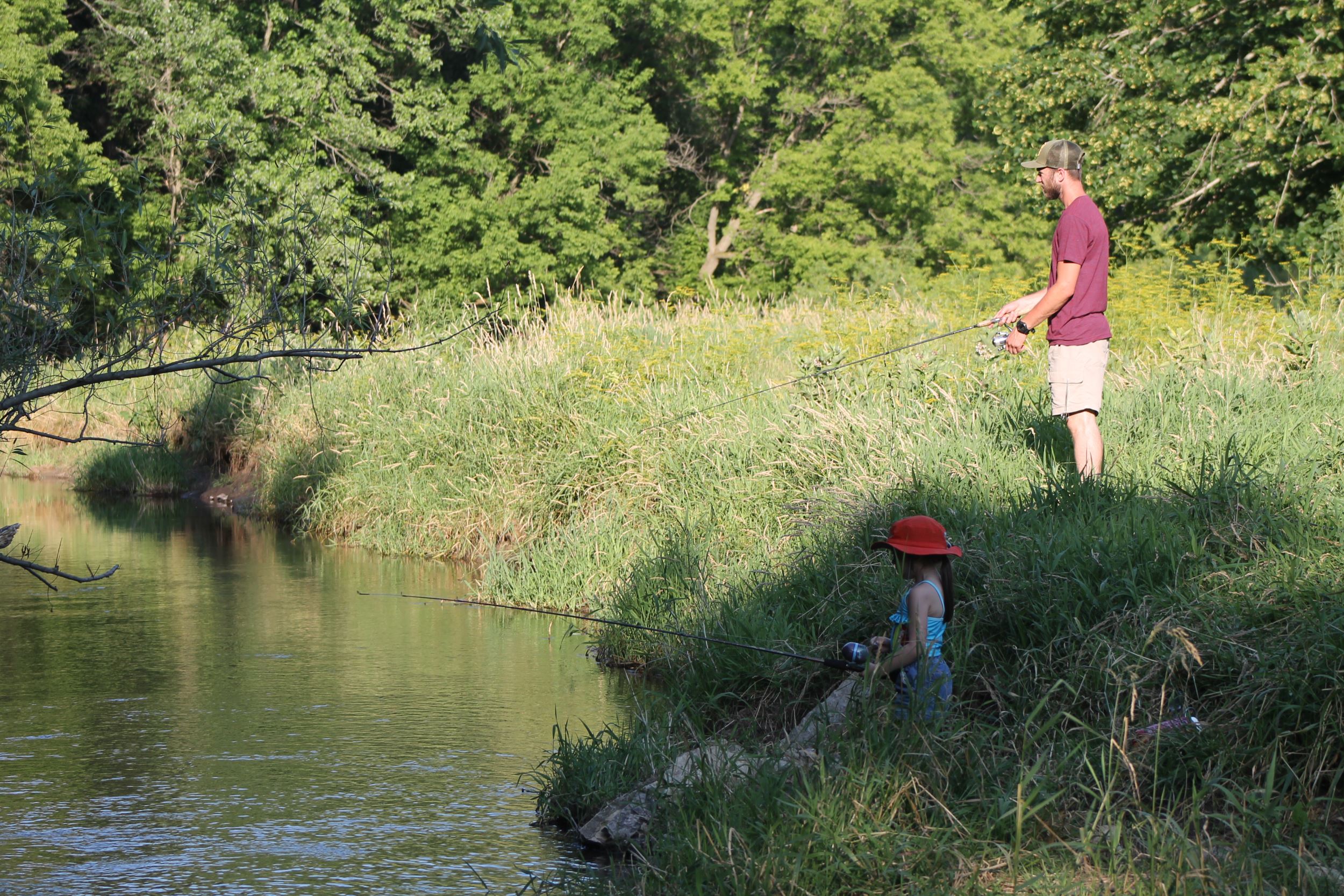Get Hooked on Iowa's Trout
Posted on June 20, 2016 in Blog

by Bill Kalishek
If there is a fish that can capture people’s imagination, it has to be the trout. The intense blood-red color on the belly of our native brook trout or the orange-red margin of the adipose fin of a brown trout make them some of the most beautiful of all fish. Their beauty, coupled with the quality of the streams where they choose to live, make trout a favorite of both anglers and conservationists.
What trout want
Trout distribution is limited in Iowa by water temperature and general stream health.
Trout generally don’t survive in water greater than 75 degrees, while most Iowa waters top 80 degrees by late summer. However, water emerging from northeast Iowa springs stays at about 50 degrees year-round. Streams fed by these springs have water cold enough to support trout for a distance that is dependent on the size and number of supporting springs.
Early warnings
It’s hard to say which Iowa streams historically hosted trout because their population decline was already noticeable when biologist Seth Meek conducted Iowa’s first comprehensive fisheries inventories in the early 1890s. He noted several former trout habitats, such as the Upper Iowa River, where anglers reported they were no longer finding trout.
Meek attributed the declining trout populations to the loss of native prairie, which had naturally slowed and filtered stream flows while reducing cyclical flow variations.
Early responses
Even before Meek’s reports, Iowa’s human population was responding to our declining fish populations. The first state fish hatchery was constructed in 1873 on the Wapsipinicon River in Anamosa, and its primary function was to produce salmon and trout for stocking in Iowa waters.
Unfortunately, some of the earliest fish stockings in Iowa put coldwater species into waters that we now know were too warm to support them, such as stocking Penobscot salmon into Clear Lake in 1876.
Throughout the latter half of the 1800s, many species of trout and salmon were stocked in Iowa. In the process, two additional trout species, neither of which is native to Iowa, became established here.
.jpg)
Recent responses
Iowa’s current trout populations are beset by many of the same environmental problems they faced in 1892—especially excessive silt loads and increased water delivery into streams.
However, over the last 20 years, populations of naturally-reproducing wild trout have increased as a result of several factors. The combination of improved land use in the watersheds draining into the streams and the land use immediately along the streams has led to improved physical characteristics in the stream itself.
Soil eroding into streams and the increased nutrients that often go with the soil have a large impact on trout populations. Conservation programs and conservation management practices have greatly reduced the amount of soil and nutrients entering trout streams. Stream bank stabilization has also reduced the amount of these materials.
The proper management of the watershed and riparian zone results in a cleaner stream with a higher amount of clean gravel and rock substrate. This produces quality spawning areas for trout and greater diversity and higher numbers of aquatic insects, the primary food of trout. Improvements in the in-stream habitat needed by trout mean more places for trout to hide and live.
All these efforts have resulted in the increased success of spawning trout in our northeast Iowa streams and more wild trout populations.
INHF's role
Over the year's, many INHF projects have helped protect trout and their habitat. In Allamakee County, for example, the Paint Creek Valley project took over a decade to complete, but 2.1 miles of trout stream were protected as a result. The area is home to a population of naturally reproducing, wild brown trout and has fairly easy access for fishing.